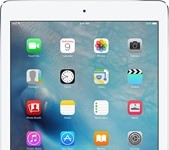 This one begs for Quinn‘s take.
This one begs for Quinn‘s take.
Ellen Safley–a librarian at the 14,500-student University of Texas at Dallas, actually in suburban Richardson–says e-book use is surging among students. See her PPT. How we can stand some good news after a rather mixed week for e-books!
 Safley comes up with some interesting numbers even if one must consider factors such as the high percentage of distance-learners enrolled at UT-D. Along the way, she serves up some must-read background on e-books in general from a librarian’s perspective, such as the pros and cons of various e-book-style products.
Safley comes up with some interesting numbers even if one must consider factors such as the high percentage of distance-learners enrolled at UT-D. Along the way, she serves up some must-read background on e-books in general from a librarian’s perspective, such as the pros and cons of various e-book-style products.
But what are the actual stats from this well-regarded, research-heavy institution? Safley reports:
- A 19 percent decline in circulation “from the stacks” in the two years ending in August 2005.
- An increase in total online use of e-books by document from 29 percent of print in 2004 to 58 percent in 2005.
- An 88 percent increase in pages viewed from ebrary between July-December 2004 and the same months in ’05. Tellingly, the number of pages copied and printed jumped 95 cent. More than a few students probably want to turn e-books into p-books because of unhappiness with the technology. As I recall, that’s a common attitude of the University Chicago students whom Quinn has observed.
- Major dissatisfaction with NetLibrary. From 2004-2006, there were “over 22,000 uses per year on 37,000 titles.” But “Reactions to NetLibrary by staff are fairly negative as they do the troubleshooting for passwords, proxy problems, printing issues and readability concerns.” Beyond that, keep in mind that UT-D has 14,500 students, so that we’re not talking about a huge number of uses per year by each student.
- 131,670 titles in the UT-D’s e-book collection.
Caveats: Most UT-D students are distance-learners, and the percentage is growing. In an incresingly time-short society, I’m not surprised that e-books are starting to catch on among such users. Also, I suspect that e-book use will grow most rapidly at schools where librarians are supportive of the technology. UT-D librarians obviously are.
(The Distant Librarian via Adobe exec Bill McCoy. Please note that I’m showing just part of the ebrary-related chart.)


































That’s a major caveat. Last fall, I participated in a round-table discussion at a conference on Blackboard, and unsurprisingly, the distance-learning people were eagerly embracing the features the on-campus types spurned, to the extent of even using the message boards for personal interactions, water-cooler talk, etc. The real litmus test for the acceptance of e-books (and on-line dialogue, etc) is when people start using them even though they have access to more “traditional” methods. I think e-books have a chance of catching on, if done right. On the other hand, I can’t see message boards replacing trips to the bar for people who live in the same area. (That’s not to say, however, that there’s no potential for message boards between colleagues in different parts of the country.)
Excellent points, Quinn; thanks very much. If nothing else, we know where some academic discussion at the University of Chicago takes place 😉 David
[…] Academic library eBook usage surging e-Books really are getting popular – if you look at students in academic libraries at least. Don’t believe me? Check out these stories about the University of Texas at Dallas: *E-book use on the rise at University of Texas at Dallas